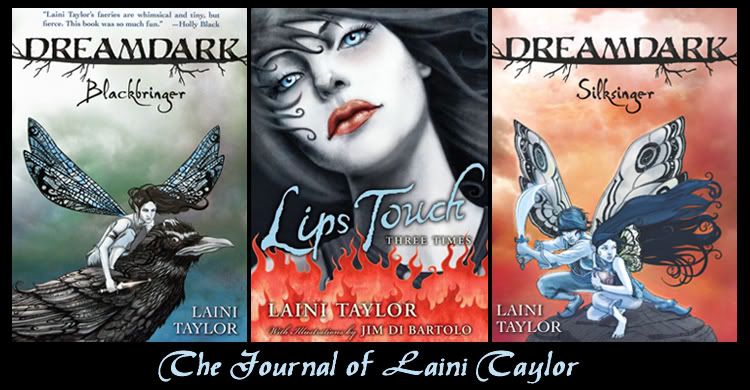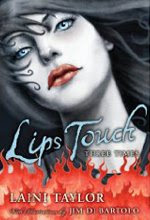[Plot -- Part I: What is Plot?]
[Plot -- Part II: Character, Motivation, and Conflict]
Is structure the same thing as plot? Close. It's the way you organize your plot. I'm going to stick to super-basics here and talk about: the beginning, middle, and end, your basic three-act structure, which is as old as the dramatic arts, dating back at least to the Greeks. Even complex plots mostly fit into this basic frame, for the reason that it works -- it is the perfect frame for satisfying those basic readers' needs.
I know the part everyone worries about is the middle, the big dread middle, but let's start at the beginning with ... beginnings!
Beginnings
This is the "easy part", right? I mean, who among us has not written 11,000 beginnings? Ha! I know I have. But I don't think it's true that beginnings are easy. I think sometimes the reason a story doesn't make it to the middle is because the beginning isn't set up powerfully enough. The beginning has a pretty hefty workload, and must do its work with all appearance of effortlessness.
The beginning of a novel (by which I do not mean the first chapter, but the first third, roughly) needs to:
—hook your reader with a great opening line, opening page, and opening chapter. Provide no pretext for setting the book down. Grab the reader and hold on.
—introduce your characters in what feels like an organic way, and not just introduce them, but establish the connection with the reader. Make the reader care about them.
—introduce the arena of your story, your fictional world, and do so without any offputting amounts of exposition; that’s a trick. But remember, in the very beginning, you don’t really need to explain anything. You might hint at the larger context, but your primary job here is to win the reader’s interest. After you’ve got that, and they’re invested in the story, then you can risk some exposition in possibly chapter two, three, four, but don't leave the reader waiting too long to get grounded. Readers like to know where they are, have something to hang onto. I like to think of it as the difference in inflection in your voice as you ask, "What's going on here?" (intrigued and fascinated), versus "What's going on here?" (irritated and confused). It's a fine line.
—establish an intriguing premise, problem, conflict, or mystery.
—initiate and maintain narrative momentum. That is, get things going right away, and keep them going. Ladies and gentlemen, start your plots!
Got all that? It helps me to think of the scene-craft questions from the last post as I am crafting the beginning of the novel, trying to experience it from the reader's perspective. It's all about crafting an experience for your readers, with intention.
Okay, the dread middle.
Prepping this plotting workshop, I did a quick google on "writing the middle," and this is one of the things that turned up, on an educational website. It made me laugh:
“Fed up with children writing a brilliant beginning to a story and then totally losing it in the middle? To avoid lots of speech, quick endings, or boys killing all their friends off because they don't know what to do with them, try this …”
Yes, resist the urge to kill all your secondary characters. It might be the easiest solution, but it isn't the most satisfying for readers :-)
I also found this, from writer Timothy Hallinan:
“It's kind of a shame there's no way to skip writing the middle of a novel. Writing would be much easier if only readers would settle for a crack-up beginning, then a nicely typeset page that says something like, “Then a bunch of stuff happens,” followed by an absolutely slam-bang ending.
But they won't. They've shelled out for that book, or gone all the way to the library to get it, and they want a middle. It's unreasonable, but there it is.
You have to write the damn thing.”
Yes, you have to do it. I recall that when I embarked on writing Blackbringer in earnest, I had never made it deeper into a novel than a few chapters, and the few times I’d tried, this is what had tripped me up. I didn’t know how to fill up an entire book with things happening. How did authors do that??? Blackbringer was really my novel-writing crash course, my “learn by doing,” and I wrote a lot of stuff that did not make it into that novel. At first it felt like wild floundering. I didn’t know my characters, I wasn’t sure of my plot, dialogue felt so forced. It was not all that fun.
But I kept at it, just kept writing scenes, accepting that there was a good chance they wouldn’t be for the actual book, but just might exist for the sole purpose of making my characters and world real to me. And it worked. I already talked about character and plot being intertwined, and here’s where it becomes totally real. To repeat what I said last time: once you have a fully realized character with genuine motivation, plot happens! Which is not to say it’s always easy, but it no longer feels like trying to pull a rabbit out of a very empty hat.
When you’ve set your story on a course toward a goal, and you know your characters, and you are at home in your fictional world, things actually start to happen. It’s the coolest thing.
I find that it’s really hard to convey this in the abstract. I can talk about it in the context of my own books, which you may or may not have read, but it’ll give you an idea. In Silksinger, one of the main characters, Hirik, is a young mercenary who guards a dragonfly caravan in its travels over the vast and treacherous Sayash Mountains. I had his motivation down—it’s a powerful motivation—but I struggled with creating scenes to bring him to life and flesh out the plot, because I didn’t yet know the texture of his world. It all felt thin and insubstantial.
So I did a lot of brainstorming about his world, specifically, life for the faeries and hobgoblins who travel these routes. Writing is always the act of creating something from nothing, and when you’re writing fantasy this is at its most extreme, because you have to construct the whole world first.
Brainstorming is my best friend. It’s a vast field to play in. You can come up with anything at all, however wild or improbable, and keep what you like and cast the rest aside. And I came up with all kinds of details that began to make the caravan life feel real to me. The cast of other characters, the food they ate, the way they talked, their superstitions and pecking order, all of that stuff. I had fun with it! And a lot of it is stuff that never gets explicitly mentioned in the text, but I had to know it in order to build scenes within an imaginary world.
Once I had a grasp of my world, I started freewriting some scenes. Freewriting is not my best friend. It’s more like the virtuous cousin I know I should like but I really want to kick in the shins. Freewriting is every bit as important as brainstorming to me in the pursuit of creating something from nothing, it’s just harder. But I make myself do it, and it pretty much always works. So I wrote a scene, in the spirit of not being attached to the outcome. And I came up with Hirik’s introductory scene that way, and it was actually fun to write, and natural! I spent some time with my secondary characters, and they totally stepped up and started interacting and they turned out to be jerks, which was awesome; it gave me conflict, and out of conflict came subplots -- subplots!!! -- which enriched the plot and gave me new opportunities to explore my themes.
Soon after that, Hirik’s path crossed with the other main character’s, Whisper, and I started hitting the main “beats” of my story.
This is a term I absorbed only recently: BEATS. I got it from my friend Stephanie Perkins, who I believe got it from her kick-ass editor, Julie Strauss-Gabel at Dutton. I already thought of my plots in terms of moving from one important moment to the next, but I didn’t have a term for my important moments, and now I do. (Thank you!)
The middle of your novel is a series of beats. Each beat is a scene or a grouping of scenes, and you use them to ratchet up tension and mystery and suspense, building and building and building as you compel your character and reader forward. It helps me to have several solid beats to work toward and build around, so the middle stops feeling like this big squishy nebulous blob.
And here is the place to talk about another crucial plot element: pacing, or the speed with which you usher your reader through the beats. You have to pace your beats. You build toward a beat, then it happens, then you trail away from it, transitioning gracefully to your build toward the next one. Think of a roller coaster, how there’s that big build as your car is being towed up to the zenith before the first big drop. All that time, you’re anticipating the drop. Anticipation is every bit as important as the big moment it heralds, and sometimes more important. Anticipation = page-turning. If you just slam the reader with an unexpected beat, you’ve lost an opportunity to lure them through some pages. Of course, there is a place for surprising the reader, just be careful about pacing. Too few beats and the story gets lethargic. Too many, and it gets kind of insane. Have you ever read a book that slammed you so relentlessly with Big Events that soon, nothing seemed Big anymore? Too much !Crisis! and you'll desensitize your reader, which you don't want to do. You're tendering them up for your big moments, so they are putty in your hands!
There should be a steady build toward each beat, with the whole body of the novel being a steady build toward the main beat, or climax.
The middle of a novel should:
—build the tension of your central conflict; raise the stakes
—get your character progressively deeper in crisis
—set up for the climax
—deepen your character relationships
—develop your themes
If the beginning is a showhorse that prances and dazzles, then the middle is the drafthorse, doing the heavy pulling. Here you build, deepen, develop. I know middles can be intimidating, and the ways I have learned to build middles are:
—know your characters; get them talking to each other, get them doing stuff. Scenes will happen. Also, know your world. Seemingly insignificant details can lead to scenes.
—don’t be precious; try lots of scenes without being attached to necessarily using them. Think of it like an artist doing sketches. They’re essential to the end result, even if nobody but you ever sees them, and if you don’t do them, you’ll probably never hit on that perfect composition.
—brainstorm. Come up with a zillion ideas. Know the texture of your world; know way more than you’ll ever be able to fit into the narrative. It gives you a solid place to stand as you build your story. (In that Hirik scene I mentioned, it was what they ate on caravan that was the seed of the scene, and it took on life from there.)
—freewrite. Just do it, yo.
—have a sense of the beats of your story
Whew. That's a lot. Lucky for you, I don't have a lot to say about endings!
Endings
If you’ve done well so far, in an ideal world, the ending might come naturally. (Or it might not.) Here is the place where you:
—solve your mysteries
—establish your characters’ growth/change as a result of the story events
—wrap up your themes, make your point(s)
—resolve your conflict and craft your denouement, the aftermath of your climax, and here you need to choose whether you’re going to give the reader what they want, or not, or some but not all.
The last thing I’ll say is to recommend you read your favorite books and analyze them for plot and structure. Take note of the beats and pacing, and how the author is manipulating you (in a good way) as you read. And look at your own work in progress and really be intentional about everything. You’re both God and Director; it’s all up to you, and a well-structured novel doesn’t [usually] happen by accident. So go forth and plot!
* * *
[sidebar on scene-craft]
"Weaving and Embroidery"
I will generally know going into a scene what has to :
a) happen in it
b) be conveyed in it.
A scene operates on at least two levels, the uppermost being the straightforward: what is happening? And over the course of all this happening, there are subtler things I’m trying to convey: theme, backstory, character development, and I try to find organic ways to embed them in the scene through dialogue, interaction, reaction, etcetera.
I think of these two levels as "weaving" and “embroidery.” This is one of my super-nerdy writing analogies. When Jim and I went to Turkey about ten years ago, we bought a rug, as 98% of tourists do. Well, the kind we bought is called a "gigim", which is basically a loom-woven kilim that is then embroidered. When we went to Chiapas a couple of years ago and bought Mayan textiles, same thing: hand-woven cloth that is then embroidered. And I've long thought of scene-craft in this way.
The things that are physically happening in the scene are the weave of the plot—the long warp threads, the cross weft threads. That provides the matrix for everything else you might "embroider" into it to give it richness and decoration.
What I like about this idea is that it makes it okay to do the basic weaving first—get down the basics of what’s happening, and them come back with your embroidery needle after the fact and add the layers of richness and depth, theme and development. If I had to get all my themes and subtext and subplots perfectly woven in with the warp and weft, I’d go crazy and fail miserably. The great thing about writing is that it is not performance. You don’t have to ever get it right all together in one go. And that goes for plot in general. There is never a reason you have to be afraid. No one is watching!
[end sidebar]
* * *
Well, I think that's all I have to say about plot for now, which is a good thing, because what I really need to be doing right now is working on my w.i.p.! Cheers!
Subscribe to:
Post Comments (Atom)









16 comments:
This was so helpful, Laini, thank you for posting all this! I think I really needed to hear a lot of it. I am stuck in the squishy middle. I need character motivation. I need to brainstorm and world build and get down the "weave" of my story!
And even though I am, at this point, terrified to move forward (I keep thinking I'm going to royally mess it up, which doesn't make sense because that's what the "delete" button is for) I at least have an idea of where I need to go now.
So thanks! (I think ^^)
These comments about dread middles are especially helpful, Laini. That's where I'm at right now too--and I've been convinced that I'm doing it wrong somehow because I have no idea what happens next. I have had a much less dysfunctional relationship with my WIP this week after hearing your advice about middles. Thanks! Now... back to work.
Laini, this series of posts on plot is pure gold. It is so generous of you to share it. I feel like I've been given a most wonderful gift. Thank you!
Thanks for a gem of a craft post. Just what I needed today for some focus as I'm in the beginning stages of a new novel.
Thanks for sharing this, Laini!
I fully intended to attend your session, but I was called away to deal with something, and before I knew it the hour was up.
Hmm. I think I shall bookmark this post, perhaps save it as a text file, maybe embroider it somewhere, or etch it into stone?
This is a GREAT chunk of information to work with. THANK YOU!
This makes me want to go back to my first draft. You see, I did not write a messy draft that was bursting with information that needed to be hacked away, filed into perfection. I wrote a thin, bleached-out draft full of holes. It's like I have the bones, and the loose definition of the figure, but it needs filling out. That's my goal right now, to plump up my novel.
And I just had to tell you this: I was in a bookstore the other day and found your book Lips Touch sitting on a display table. IT WAS SO COOL! That is my favoritest book ever. You probably can see your book lots of places, but just know that in a bookstore in the middle of Saskatchewan, your book is being proudly displayed for everyone to see!!
Absolutely wonderful, every word and every sentence of this essay! :) It makes me jazzed. Thanks so much for including it here on your blog!
Thank you so SO much for all three posts! I attended the workshop, but having all of this is much more comprehensive and fabulous. You are amazingly generous to share it with us! It is just what I need right now as I am trying to analyze and revise my W.I.P. THANK YOU!
This is a great series. I just wanted to point something out. In the first part, you use the word "gyp" (spelled there "jip", but youmight not want to. Since it's a racial slur against the Romani meaning they cheat/steal.
I'm so glad you posted this Laini! I took masses of notes at the conference but I was also listening and trying to process it all so it was a weak picture of the real thing. I love that you've captured all the meat here. Hurray! And thank you for sharing at the Seattle conference again. You're an excellent speaker, you have brilliant word pictures and seriously good stuff to share!
I'm so glad you decided you share your notes/thoughts about plotting a novel on your blog! Such a wealth of good advice. I will definitely be bookmarking this one and pointing all my writers to it.
A lot of writers I work with get very overwhelmed by the thought of themes and structure and pacing... this is a great way to break everything down into manageable parts. Thanks, Laini!!!
And this one is the best! Thank you so much, Laini! I'm diving into my third draft, and your posts have made me think about changes I need to make.
You are my hero, Laini. Thank you, a million times, thank you for this.
Oh, and you might want to fix the link on part 2 sending readers to part 3, because the link doesn't seem to work.
Thank you so much for sharing such insights, Laini! I, too, am stuck in the dread middle right now and your post really helped me think through some of the plot parts that were stuck in the mud.
An awesome series of articles. You have really given me some great insight to where I've been and where I need to go with my current work in progress. Thank you so much for sharing.
Post a Comment